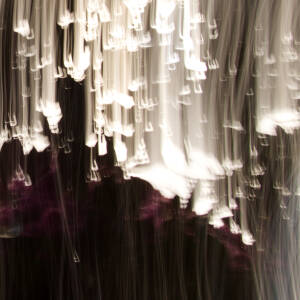Out
My photographic womble on that Friday is about to end on the gentle slope that climbs out of the Rhododendron forest into an Azalea garden. Technically, Azaleas are also Rhododendrons – they are distinguished by being deciduous, the flowers are funnel shaped, and the stamens and pistils of the flowers extend well out beyond the petals. So this is a very different part of the Dunedin Botanic Garden ‘s ‘Rhododendron Dell’, but it’s also a completely different world for an ecologist cum photographer. The trees are lower, most could be classed as shrubs, with manicured lawns of green between. Things seem more horizontal and less vertical. Eruption into light and colour is complete.
The transition happens very quickly. It’s like that for the plants and animals. Ecologists call the edges of habitats ‘ecotones’. Diversity of species usually increases in these narrow spaces because the specialists on either side can’t compete as well as the species with a wider tolerance that take the lead in the transition zone. In this case, forest species cope with dark and require more shelter on one side; light-loving specialists can’t do so well in the dim ecotone. Many of you will have passed through ecotones like the timberline when walking up a mountain, our along the seashore. The saline and wave exposure gradient from the lower intertidal zone up and out onto the land can happen within 10 metres and there is often a fascinating ‘zonation’ as the plants and animals erupt or fade out within a few steps.
I’m hoping that the photographer in me will now change too, but I think it might take quite a few baby steps yet.

Comments
Sign in or get an account to comment.


